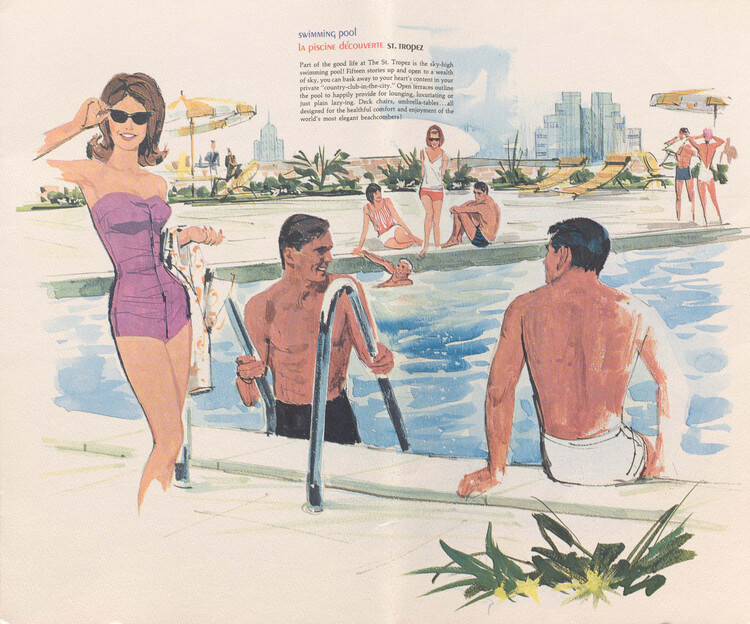
The end of the summer season is usually marked by crowds rushing to public pools to enjoy their final days splashing around the water. Public pools are much more complex than the fenced-in, chlorinated, and noisy bodies of water that they may seem to be. A delicate history and many socio-economic influences lie beneath the surface and dictate who gets to go for a swim. What happens when pools shift towards becoming private property and a sort of status symbol, and when these public spaces aren’t intended for everyone?

In the early 1900s, public pools were in demand. Not only were they a way to stay cool in the hot summer months, but they were also a way to “clean off” for lower-class labor workers. Many rural towns saw pools as the epicenter of their neighborhoods, and the place where many social gatherings were held. However, the term “public” began to shift in the post-war era when pools became segregated by race, either by law or by the social pressures of the time. This caused children who previously were allowed the luxury of a public pool to have to swim in dangerous rivers and lakes. In 1964, many communities refused to follow the Civil Rights Act, and shut down their pools instead of desegregating them. One of the largest pools in the world, located in St. Louis, Missouri erupted in violent protests over desegregated swimming, causing attendance to significantly decline and the pool to permanently close just a few years later. The long-term result was the mass rush to build private pools in people’s backyards and use public facilities less.

Even some of the densest cities in the world, like New York City, where backyards, let alone private pools, are hard to come by, show that people are finding ways to avoid reliance on public facilities. The city now has nearly 15,000 private pools, whereas just 70 years ago, this was the number of private pools that existed in the United States. Most of the neighborhoods in New York City that have private pools skew towards the upper class and predominately white areas.
In the present day, there are many fewer public pool facilities than there should be, given the rapid increase in population and the call for more public spaces. In Long Beach, California, there was a push to build a pool for the city’s low-income youth after kids were caught on tape sneaking into a pool at an apartment complex. Long beach only had three public pools, none of which were located near public transit, making it more difficult to access for those in the town who don’t have cars. But at the same time, the city of Long Beach was seeking approval for a nearly 100 million dollar renovation for an aquatic center near its wealthy beach-front neighborhoods.

Some cities, as smaller scale solutions where kids can play and cool off, are implementing splash pads. These spaces feature sprinklers and nozzles located on the ground that shoot water into the air and are often triggered by motion sensors. With little to no standing water, there’s no need for a lifeguard, and they eliminate the many associated risks of pools. Splash pads are also much cheaper to maintain and have more capacity, allowing many more people to visit them, compared to swimming pools.
What the public pools of the future may look like remains to be seen. There’s an agreed-upon need for more public spaces, including swimming pools, especially in neighborhoods that don’t have access to public transit and can’t get to pools that are far away. This is part of a larger crisis, where public spaces aren’t really for the public, as in “everyone”.




